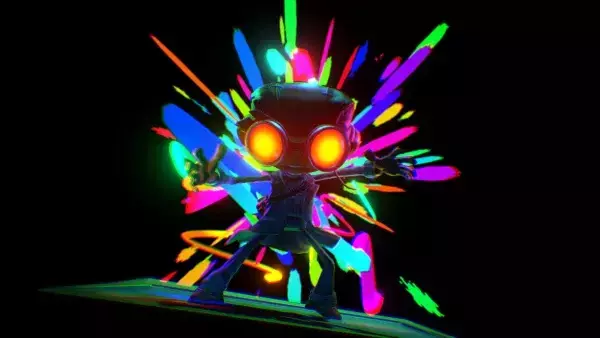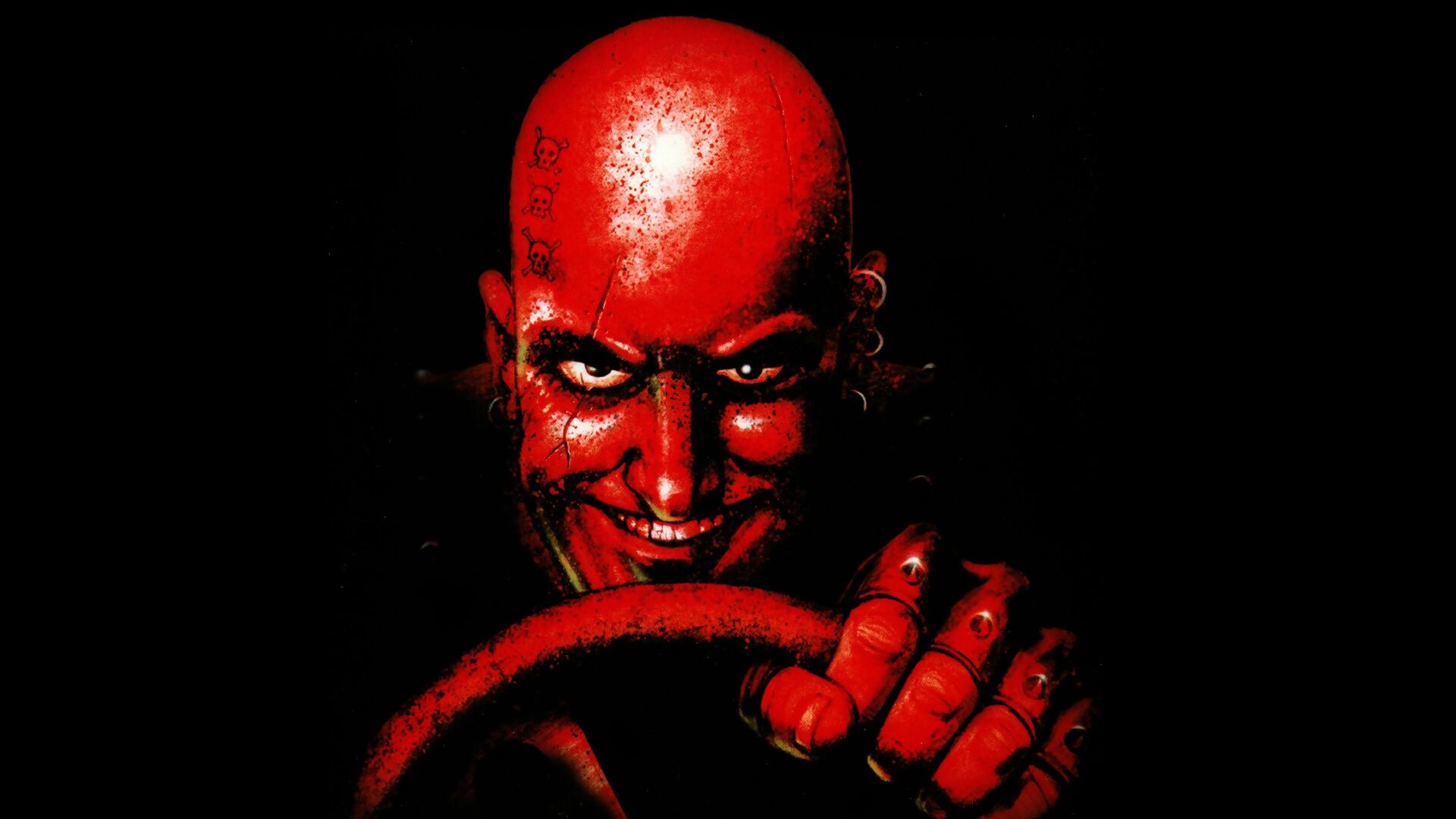
Brutal future sports games like Speedball and Carmageddon peaked in the 90s before fading into obscurity. We talk to the developers who spearheaded it.
Nineties video games might seem somewhat quaint by modern standards, buy they could also be terrifically violent. Yes, games contained violence before and since, but the 1990s? It offered a special kind of splattery, gory mayhem. Grand Theft Auto, Mortal Kombat and Doom were all birthed amid the blood and guts of that era…. and they weren’t alone.
The 90s also gave rise to a distinct sub-genre of bone-crunching violence: the dystopian, future sports game. From the Bitmap Brothers’ Speedball 2: Brutal Deluxe to Carmageddon, the decade saw a rise in games where the skill and competitiveness of sport was paired with the kind of cynical and violent backdrops that were formerly the preserve of bleak sci-fi novels or cinema.
With 1976’s Death Race considered to be the original controversial video game (it was an unlicensed arcade take on the 1975 film, Death Race 2000), futuristic brutal sports games that killed players or spectators weren’t exactly new. It was only when we got to the 90s though, that an explosion of these uniquely dystopian games arrived together. Smash TV, Mutant Football League, Blood Bowl, HyperBlade, Killerball, Riot, Rocket Jockey and Soccer Brawl are just some of the more memorable titles, along with the two standout entries that bookended the genre’s brief explosion: 1990’s Speedball 2: Brutal Deluxe and 1997’s Carmageddon.
You’d be forgiven for thinking that brutal future sports films like Death Race 2000 and Rollerball, forged amid the cynicism of 1970s cinema, would have been the key influence on the developers of these games. It’s not actually that straightforward, however. In a 2014 interview with Eurogamer, Speedball 2 designer Mike Montgomery said: “People mention Rollerball, but I can’t remember any Rollerball influence whatsoever. I know Rollerball was around at the time, but to be quite honest it was a coincidence more than an influence.”
It’s a banger
Likewise, Carmageddon’s development later in the decade wasn’t initially influenced by the 1975 film, Death Race 2000, despite the obvious parallels of a future dystopia where a brutal race sees points awarded to racers who take out pedestrians. “Carmageddon's original incarnation was a destruction derby – or ‘banger racing’ as we call it in the UK – game demo that Patrick [Buckland] and I made,” the game’s co-creator, Neil Barnden tells us. “Patrick was a long-time banger racer, I got roped in a couple of times and it certainly would qualify as a ‘brutal sport’!”
As is often the way with game design, it was actually an interest in evolving their respective physics coding which led both studios to eventually land, unplanned, on brutal sports as a gameplay direction. “Patrick’s vision of the 3D destruction derby game recreated something of the kinetic thrill of the real thing,” was a foundational element says Barnden, adding that it would “set the benchmark for years to come in terms of video game physics coding.”
Read more: The chaotic origins of Grand Theft Auto
The same was true for The Bitmap Brothers, whose original code for 1988’s Speedball evolved from a physics-based system they’d developed for a more straightforward tennis game commissioned by publisher, Mastertronic.
Despite creating the titles that would bookend the brief but creatively fertile explosion of brutal sports titles, it seems that neither The Bitmap Brothers, nor Buckland and Brandon were overtly influenced by the cult cinematic takes of the 70s. Instead, they were just developing respective physics-based engines and needed a concept to put them to good use. Now, this was the 1990s, and whether it was slacker filmmaking, grunge or pro-wrestling’s attitude era, Generation X edginess was peaking – and nowhere more so than in video games, where violence was now shaping the cultural backdrop in a way that movies had previously done in the 1970s and 80s.
As such, applying an ultra-violent sheen to their tennis game design would have felt culturally on-point for The Bitmap Bros, the rock star developers of their day whose titles always possessed a sharply-defined sense of cool. Other titles would follow suit. Futuristic sports games such as the frantic twin-stick shooter, Smash TV lifted the dystopian-hued TV show format idea directly from the 1987 Arnold Schwarzenegger flick, The Running Man (which got its own game tie-in) before ramping up the death count and upping the gore to include goons exploding into hunks of meat with the odd eyeball flying towards the screen, taking the dystopian ultra-violence of 80s films like RoboCop and rendering it in pixel form.
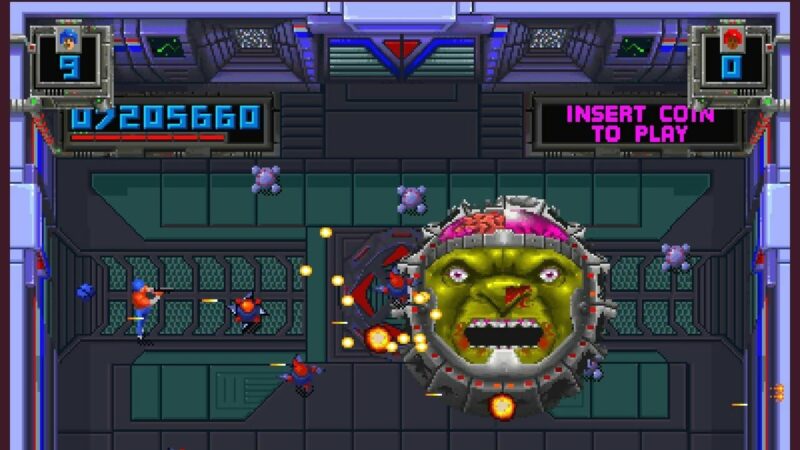
Williams’ ultra-violent Smash TV. Credit: Williams.
Drawing lines
Likewise, Carmageddon was inspired by cinematic ultra-violence. The potential for a Death Race 2000 licence (which subsequently fell through) formed the key inspiration for the controversial ‘points-for-pedestrians’ gameplay mechanic which Barnden says “was there pretty much from day one.”
There were clearly-defined limits, though, with Barnden dismissing a long-standing legend that the Carmageddon devs came close to including a gameplay feature which would have allowed players to mow down pregnant women: “There was a joke made in the office about doing that,” he recalls, “and it was immediately vetoed as going too far. We drew our own lines on what was funny, good sick funny, and beyond-the-pale sick funny…”
Still, despite drawing clearly-defined lines with regards to what was and what wasn’t appropriate to show, the leap in graphical processing power early in the decade meant that improved fidelity of violence in games suddenly began to shock parents, especially as gaming spaces increasingly moved from the arcade into the home, where concerned family members were exposed to their children’s fascination with tearing out other players spines in Mortal Kombat or mowing down Hare Krishna worshippers in the original Grand Theft Auto.
Although scandalised parents and outraged lawmakers may have had a point regarding the relentless, grimdark bloodshed that made Mortal Kombat so popular, they often missed the satire present in games such as GTA – and this was true also of the dystopian sports genre. In Speedball 2: Brutal Deluxe, the grim sight of watching a stricken player get carried from the arena by robo-medics was often punctured by the sound of somebody cheerily selling ice creams in the crowd.
While it was an addition made for technical reasons (to prevent crowd sounds from audibly looping) it added a dash of humour to proceedings, contextualising the violence through clever satire, creating the impression of a wider world beyond the game where patrons would enjoy an ice cream whilst enjoying bone-crunching violence. Knowingly or not, that in turn said something about our relationship with violence and added a layer to the game which made it a comment about violence, rather than just violent.
This element of satire in brutal sports games often went unnoticed by censors, though, with Carmageddon coming under particular fire. For Barnden, the game “was primarily played for laughs. It was all about the humour; irreverent, silly, over-the-top violence and action. Monty Pythonesque levels of silliness. It’s cartoon violence… it’s piss-your-pants funny.”
The UK’s British Board of Film Classification didn’t see it that way, and Carmageddon became the first video game to be banned, before an appeal eventually overturned the decision.
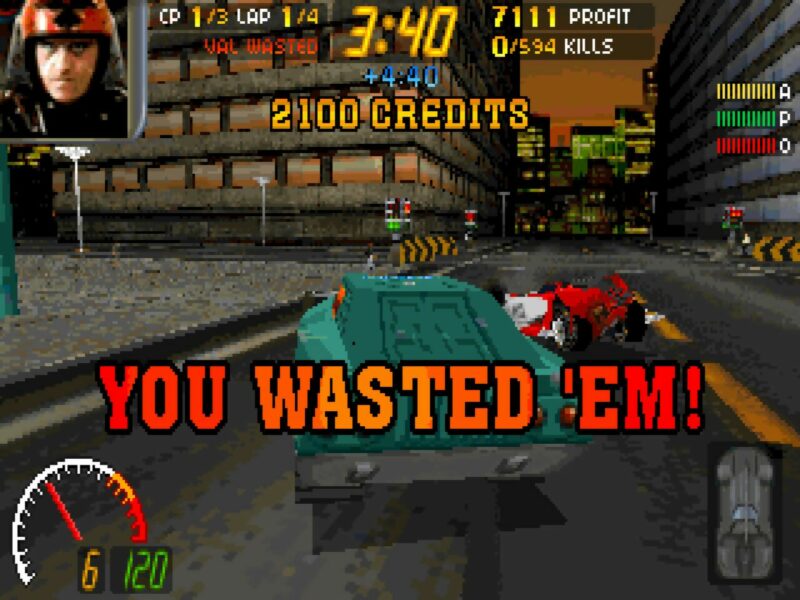
Released in 1997, Stainless Games’ Carmageddon was one of the most controversial PC games of its day. Credit: Stainless Games/THQ Nordic.
Life lessons
“It’s nice to have been part of video game history,” reflects Barnden, “and the controversy was great for the game. I don’t know that it made much difference to the moral landscape of gaming… notions of what’s acceptable have changed beyond all recognition since those days.”
Barnden and Buckland put together a tightly-buttoned – and ultimately successful – argument in the name of free speech, the former would remember his clash with the notorious BBFC chairman, James Ferman, for different reasons entirely.
“For me personally, the legacy of the battle came in the form of a caution and a life lesson: always check your flies are done up before going into an important meeting,” Barnden recalls. “When I went into our meeting with Ferman, about halfway through it I discovered mine were undone. After that, I couldn’t think about anything else. Appropriate really – entering the inner sanctum of the dictators of what was morally acceptable, and showing them my pants.”
The victory over the BBFC would prove to be a key one, as violence in games increasingly moved from outlandish settings such as dystopian sports to real-world environments. The end of the decade would spell doom for the brief explosion of violent, dystopian sports games as players increasingly enjoyed depictions of violence that required no pretext of ‘sport’ to enjoy, a trend capped by Rockstar’s release of Manhunt in 2003, a title which reignited the firestorm controversy of violence in games and made the futuristic sports games of just a few years earlier look look quaint by comparison.
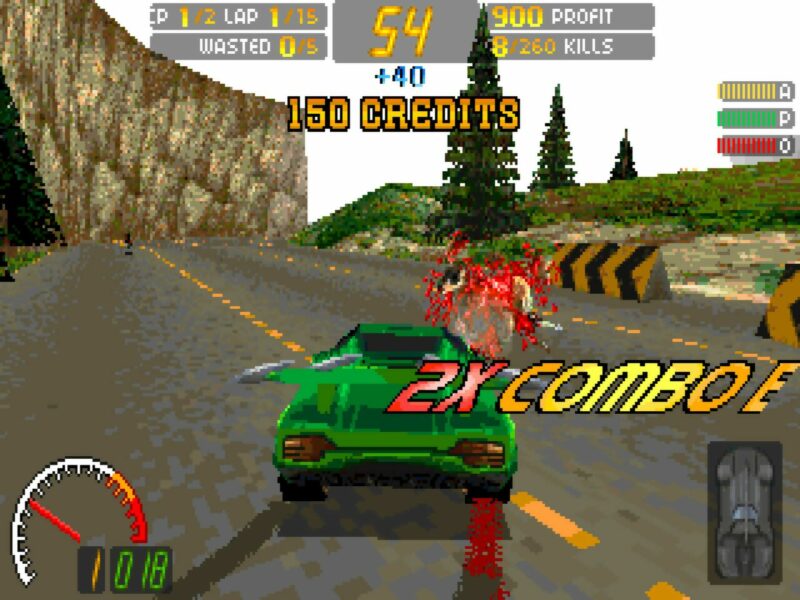
More gore and mayhem in Carmageddon. Credit: Stainless Games/THQ Nordic.
End of a Century
That’s if this string of games can even be classified as a genre at all, no matter how fondly they’re remembered decades later. For Barnden, he and Buckland certainly weren’t thinking in that way back in the mid-90s when they were developing Carmageddon. “I didn’t really see Carmageddon as a title in the brutal sports genre,” he remembers, “but it was definitely a landmark game, which set the benchmark for years to come in terms of video game physics coding. I was proud of it – and remain so – as a fun, funny, over-the-top irreverent driving game, that broke the mould when it came to racing titles.”
The same seems true for most developers of these games, whose influences were seemingly culturally inflected rather than directly linked to other games or movies of this small but memorable genre. Still, that makes no difference to those of us who loved and were influenced by them, whether by replacing childhood games of footy with Speedball rules or trying to turn every on-rails driving game we owned into the deranged freedom offered by Carmageddon. (Unsurprisingly, neither of these experiments turned out too well, as we recollect).
Whether violent future sports games were a happy accident or not, they were a weird but important part of 1990s culture. Ice cream, anyone?




